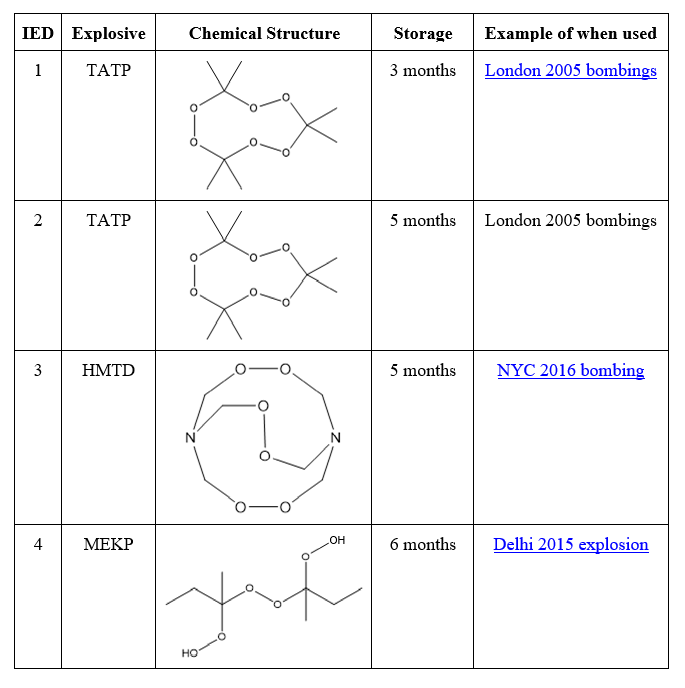Featured image credit to Pixabay
With the advancement of the internet and spreading of information, it has become easier for people to create dangerous devices. Crime laboratories are looking for a quick and surefire way to identify explosive devices before and after detonation.
Most people are familiar with the metal detectors at airports and other venues that scan for illegal substances and devices. What people do not know is that there are also devices present which scan for explosive residues and other chemicals used to make explosives. Now with the use of the internet, more and more people are able to create homemade explosives from common household chemicals.
Techniques that are commonly used for screening and post blast detection have been in use for years and hold up in the court of law. However, each have their drawbacks. Ion mobility spectrometry has trouble with interferences from background. Chromatography and mass spectrometry are not as conducive to portability and have long wait times due to sample preparation requirements.
A team of researchers from Carleton University and the Royal Canadian Mounted Police have looked at using a newer technique, direct analysis in real time (DART-MS), to detect and identify common homemade explosives. DART is advantageous over previously mentioned techniques because a) it eliminates the need for separation or filtration, b) has been shown to work well in the field and c) adds specificity (the number of negative samples giving negative results) to an already sensitive (the number of positive samples giving positive result) and selective (the ability to tell difference between positive and negative samples) technique.
The team created four separate improvised explosive devices (IEDs) representative of evidence from past cases (Figure 1).
Credit for photos to Pixabay.
Three different explosive compounds were prepared and used for the detonation (Table 1). To control the spread and limit safety risks, the charge and blasting cap were placed inside a thin walled aluminum can and then enclosed in cinder blocks.

Table 1. Explosive compounds and storage time for each IED.
Links for examples can be found here:
London 2005 bombings
NYC 2016 bombing
Delhi 2015 explosion
The study employed three analysis techniques to determine the effectiveness of the instrument; the post blast fragments were analyzed directly, analysis of dry swabs were taken from the fragments and analysis of wet swabs were taken from the fragments. The samples were stored for multiple months after detonation before analysis, which is common for casework samples in some parts of Canada.
When analyzing the fragments directly, there was background (signals produced from compounds not of interest to the analyst, i.e. not explosive chemicals) present from the surface of the fragment. Fragments are not typically cleaned before analysis, as it takes time and could degrade the forensically-relevant samples. There was no indication that one surface caused more interference or background over another, which spoke to the consistency of the technique. And even after months of storage, at least one fragment from each IED had explosive residue which could be detected.
Swabs of samples, both dry and wet, performed even better than direct fragment analysis. were positive identifications for each IED and had less background interference. The swabs made it easier to sub-sample (taking samples from smaller sections of larger objects) large objects or analyze objects that were odd in shape and would not fit in front of the detector easily.
Overall, this study provided evidence that DART is a useful technique for the detection of explosives. Knowing that it is portable and has better sensitivity, selectivity and sensitivity makes it a good candidate for future use in the field and in the lab. The ability to detect more residues will help investigators after future attacks, as well as have the potential to stop them before they happen.
| Title | Identification of post-blast explosive residues using direct-analysis-in-real-time and mass spectrometry |
| Authors | Chelsea Black, Terri D’Souza, Jeffery C. Smith, Nigel G.R. Hearns |
| Journal | Forensic Chemistry |
| Publisher | Elsevier |
| Year | 2019 |
| Link | https://www.sciencedirect.com/science/article/pii/S2468170919300827?via%3Dihub |


